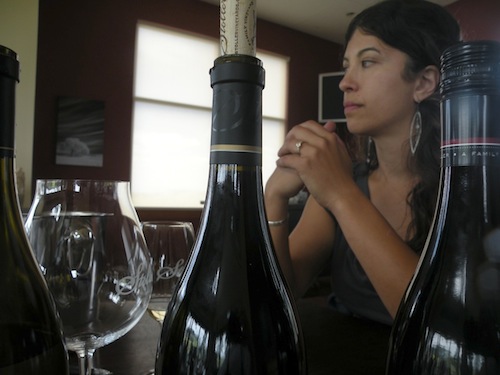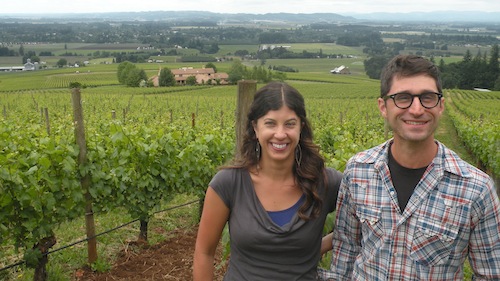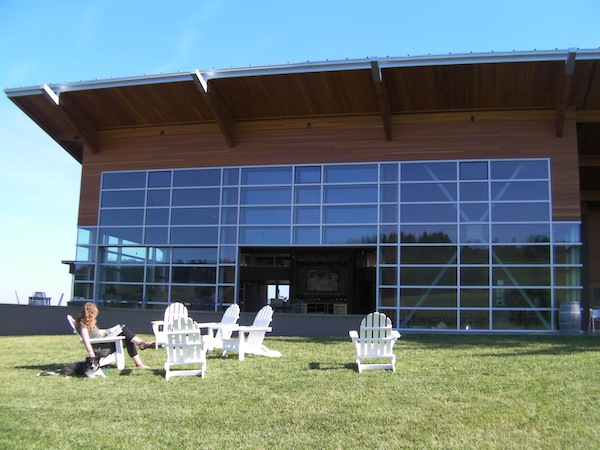
DAYTON, Ore. – As it marks the 20th anniversary of planting its first vines in the Dundee Hills, the team at Stoller Family Estate is gearing up for big things – and has a growing winemaking team in place to pull it off.
Bill Stoller planted his first 20 acres of Pinot Noir and Chardonnay on his family’s former turkey farm in 1995. That has now grown to 195 acres, with another 30 acres of prime vineyard sites to be planted in the next three to five years.
This is all part of the plan to continue to grow the successful Stoller Family Estate brand. This year, the winery has about 18,000 cases of wine, and it plans to grow that to as much as 25,000 cases next year.
“We just want to keep scaling up,” said Melissa Burr, director of winemaking. “We’re opening ourselves to the possibilities of growing thoughtfully.”
Stoller Family Estate grows winemaking team

Burr, who has been Stoller’s winemaker for nearly 11 years, has added two powerhouse associate winemakers to her team: Ben Howe and Kate Payne Brown.
Howe is the former director of winemaking and vice president of operations for King Estate, quite possibly Oregon’s most visible winery. Burr said Howe and his wife were looking for a lifestyle change that would put them in the northern Willamette Valley.
“Ben is looking forward to shifting gears a little bit,” Burr told Great Northwest Wine. “He wants to focus on estate vineyards and winemaking on a smaller scale of production. He’s a real collaborator.”
Brown was assistant winemaker at highly regarded Archery Summit, not far away from Stoller in the Dundee Hills.
“We want the A-team,” Burr said. “We want to grow quality along with quantity. I’m really grateful to be part of this dynamic, growing team.”
Stoller is best known for its Pinot Noir and Chardonnay, but it also is testing new opportunities. For example, Burr has made a Pinot Noir rosé the past few years that has flown out of the tasting room. So she bumped production from a few hundred cases to 2,000 and put it into distribution channels. She’s done the same thing with a stainless-steel Chardonnay.
Stoller wines are sold in more than 30 states, and the additional production will go into the current distribution pipeline.
“We’ll be able to support those markets more,” she said.
Stoller Family Estate history

Bill Stoller was born on the family farm that now is home to his vineyard and winery. He bought the land from his cousin in 1993, the same year he became a co-owner of Chehalem Wines with founder Harry Peterson-Nedry. Vineyard planting began in 1995 and, with help from Peterson-Nedry, Stoller launched his eponymous winery in 2001.
In 2003, Stoller hired Burr, who grew up not far away in Salem and was on a path to enter the field of naturopathic medicine before she caught the wine bug. In 2001, she landed an internship at Cooper Mountain Vineyards in Beaverton – a nice, easy way to get some hands-on winemaking experience. Little did she know that days before harvest, Cooper Mountain’s winemaker would quit.
That put her in charge of making 16,000 cases of wine on her own. Today, she is finally exceeding the production of that first hectic harvest nearly 15 years ago.
With a strong winemaker in place, Stoller brought in Gary Mortensen in early 2012 to run the day-to-day operations and fulfill the long-term vision for growing the winery. Mortensen had worked for years at nearby Sokol Blosser, then went on to become an award-winning documentary filmmaker and in high-tech startups before deciding to return to the wine industry.
In 2011, Rob Schultz joined Stoller as vineyard manager.
Mortensen, a certified Beatles uber-fan, sees the parallels between his team and the Fab Four.
“They’re like Lennon and McCartney writing a song,” Mortensen said of Burr and Schultz. “There’s a healthy tension. These two come at it from different perspectives, and that’s why we’re getting such good fruit. They’re always respectful, but it’s fun to watch them. The bottom line is everybody here wants to make the best wine.”
Continuing to grow at Stoller

The Stoller team is working hard to build the winery in a steady manner. In March, it announced that it will be building a second winemaking facility on the 373-acre estate.
“This new facility will enable us to meet increasing demand for our wines and ensure that we maintain our quality focus as we grow,” Mortensen said. “It will serve as the eventual home of our Dundee Hills tier and allow us to focus our original winery on our smaller-lot reserve and legacy wines.”
Stoller’s original winery was the first to receive the LEED Gold certification when it opened in 2006. The tasting room, which opened a few years later, is run 100 percent on solar power – even in the oft-cloudy Willamette Valley.
“I’ve always had the belief that when you build something, you build it sustainably,” Stoller said. “It starts with the land, which you want taken care of for centuries to come, and you want to make the buildings part of the land.”
The tasting room provides a 180-degree view that includes Mount Hood, the Willamette Valley and, of course, his vineyards.
In 2014, Stoller was named Pacific Northwest Winery of the Year by Wine Press Northwest magazine.

Leave a Reply